Fylde students take in the horrors of Auschwitz
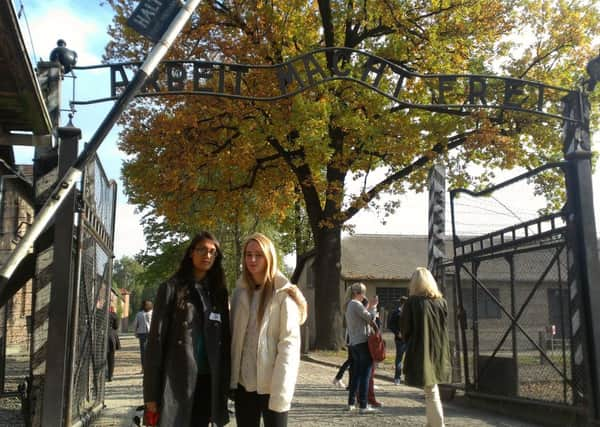

“I don’t know who said it, but there is a quote, ‘not all the victims were Jews, but all the Jews were the victims,’” said our guide, Lukas Lipinski.
He stands on the site of the memorial to the millions who lost their lives while incarcerated at the concentration camps of Auschwitz-Birkenau.
Advertisement
Hide AdAdvertisement
Hide AdThe site where 1.2m people died, 90 per cent of whom were Jewish, rounded up from all around Europe. Others were intellectuals and resistance prisoners, gypsies, criminals and homosexuals.
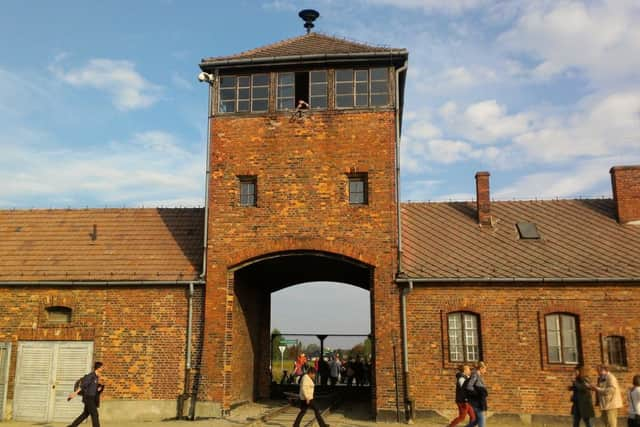

Astonishingly, Lukas retraces his steps on an almost daily basis for the visitors who make this trip to see a small corner of Poland, where some of the worst atrocities of the Second World War took place.
For many, a one day tour featuring so many examples of inhumanity is more than enough.
Arriving at Auschwitz, I had no idea what to expect.
Certainly not the warm sunshine of October, having been told to expect frost-like conditions. The sun seemed to put a warm, radiant glow across the many acres of the camps. Weather so far removed from the stories of horror which awaited.
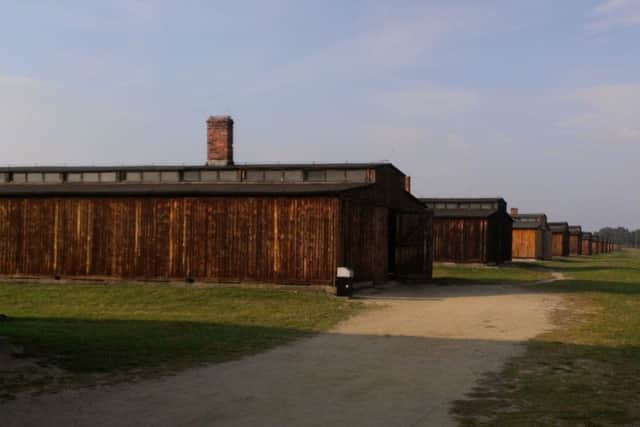

Advertisement
Hide AdAdvertisement
Hide AdAt first glance, it was hard to imagine this to be the place where so many hundreds of thousands of people were imprisoned, forced into work, and tortured by the Nazis during the Second World War.
Walking through the wrought iron gates of Auschwitz, Lukas points out “the biggest lie in the history of the world”. He was staring at the slogan above - arbeit macht frei - ‘work sets you free’.
A high, barbed wire electric fence surrounds the concentration camp, which occupies a former Polish army barracks.
It housed between 15,000 and 20,000 prisoners at a time, people who were forced into hard labour, lived in degrading conditions and were tortured and murdered.
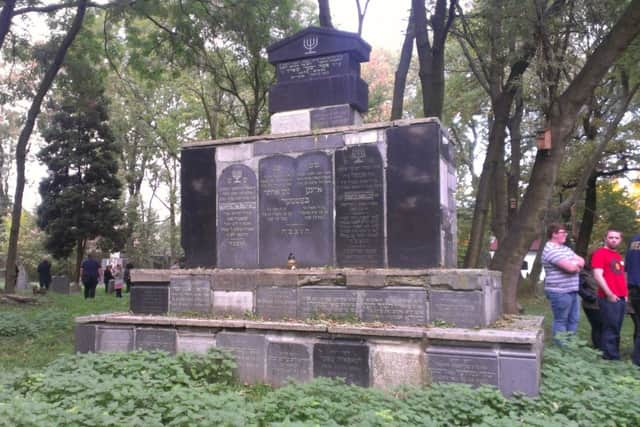

Advertisement
Hide AdAdvertisement
Hide AdToday, each building has been broken up into sections to house exhibits, photographs of camp life, personal items confiscated and exhibits.
Before travelling I sought the advice of a recent visitor to Auschwitz.
“Everyone has one moment, something they see, something they hear, which hits them like a sledgehammer - it brings home the scale of what happened there.”
Scale, more than anything, is the one word which describes everything you see.
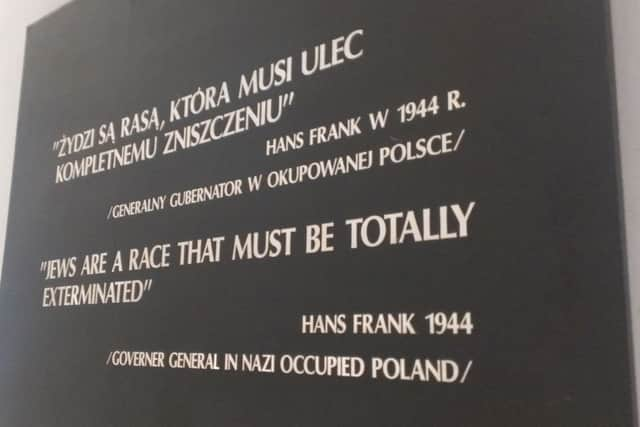

The scale of the gas chambers, the firing squad courtyard.
Advertisement
Hide AdAdvertisement
Hide AdThe scale of human hair, shaved from the heads of prisoners - two tonnes - around 50,000 people.
The scale of the inhumanity.
There is nothing that can prepare you for it, until you see it with your own eyes.
The mountains of personal effects, essential items, taken away - the Nazis knew there was no need for a pair of glasses, a shaving brush or comb, where prisoners were going.
In block 11 the true scale of the horrors committed at Auschwitz are evident.
Advertisement
Hide AdAdvertisement
Hide AdKangaroo courts, held for a minute or two, for the most minor of crimes, often resulted in death. Of more infamy is the fact in this very building, the first prisoners were gassed by the Nazis using Zyklon-B.
Because the Nazis did not know the potency of the poison, they herded around 800 people into the basement - Russian prisoners and criminals - before dropping in pellets. More than 48 hours passed before the last of the inmates died - two days of excruciating pain and suffering.
The Holocaust Educational Trust sends around 2,000 post-16 students to Auschwitz -Birkenau a year thanks to Government funding.
This month, it was the turn of around 200 students from the North West. Local schools included AKS Lytham, Carr Hill School and Kirkham Grammar School.
Advertisement
Hide AdAdvertisement
Hide AdBut unlike most school outings, there was no laughter in Poland.
As the Nazis looked to gather pace in their extermination of the Jews, the nearby Birkenau camp was constructed.
While the horrors of Auschwitz had a profound effect on our group, with Birkenau, it was a case of what you didn’t see, which left a lasting impression.
On approach to the camp, a watch tower, then train track appeared on the horizon.
Advertisement
Hide AdAdvertisement
Hide AdThis train track. Just how many entered this camp never to leave is unconfirmed, but it is estimated around 70 per cent were automatically put to death.
Thrown off train carriages after days of travel, passengers would approach a Nazi doctor.
With a flick of his thumb, left or right they would be consigned to their fate.
Left, hard labour before extermination.
Right, a walk of 10 minutes. The final 10 minutes of their lives. At the end of the tracks were showers, showers to clean after a long journey.
Advertisement
Hide AdAdvertisement
Hide AdA lie. A lie so deceitful, clothes pegs in changing rooms featured numbers, designed to help you find your items afterwards.
But there would be no after. Only the gas chambers.
There are really no words to describe this place.
It is hard to believe, clustered in one row of neat surviving wooden stables - dozens were destroyed by Nazis when they were trying to hide evidence of their genocide - 700 to 1,000 prisoners slept on three tier bunks, conditions including rats, lice, sickness and the stench of death.
The Trust has given thousands of teenagers memories they will never forget.
AKS Lytham student Kitt Chabba, 17, said: “It has really opened our eyes, it makes you think, they had a life before this and it got taken away from them without any choice.
Advertisement
Hide AdAdvertisement
Hide Ad“If you waste your own, then its like they could have had your life and done something with it.
“It kind of gives you the motivation in that sense. It makes you value your life a lot more.”
Lucy Dale, 17, added: “Birkenau was massive - it was just thought of as a death camp. They must have been so sick to do it.
“I think the thing which shocked me more than anything was in Auschwitz, where there were scratches on the walls in the gas chamber. The other was the rooms where people were forced into a small room a few metres large for days on end - a tiny little confined space, it was just so shocking.”
Advertisement
Hide AdAdvertisement
Hide AdOur final hour in Auschwitz-Birkenau was a moving memorial service led by Rabbi Barry Marcus from the Central Synagogue in London.
His words, spoken with passion and honesty, left a lasting impression.
“I always marvel at the distances we now travel, how far we have come, setting records, going further than anywhere before.
“But we still have one distance to cover, above any other.
“Rwanda, Darfur, Kosovo, Syria - here, in Auschwitz - it is evidence that still shows, the greatest journey man still has to take, is between one another.”
Follow us on twitter @The_Gazette and like our page on facebook to keep up with all the latest news.